Top 10 Longest Rivers in Morocco
Morocco is a North African country that is slightly smaller in population than the United States state of California, but slightly larger in land area than the ... read more...same state. The Atlas Mountains are the source of Morocco's longest rivers. While the majority of them flow to the Atlantic Ocean, only one major river flows north. Because Morocco has few rivers and no lakes, these rivers are culturally and economically significant. Human activities, on the other hand, endanger the survival of the biodiversity found in river valleys. The longest rivers in Morocco are listed below.
-
The first one in Top 10 Longest Rivers in Morocco that Toplist would like to introduce to you is Draa River. With a length of 1,100 kilometers, the Draa is the longest river in Morocco (680 mi). It is formed by the meeting of the Dadès and Imini rivers. It flows from the High Atlas mountains south-eastward to Tagounite, then mostly westward to its mouth in the Atlantic Ocean north of Tan-Tan. The dam (El) Mansour Eddahabi was built in 1971 to serve the regional capital of Ouarzazate and to regulate the flow of the Draa. The section of the Draa after Tagounite is dry for the majority of the year.
Draa water is used to irrigate palm groves and small farms along the river. The Draa's inhabitants are known as Drawa in Arabic, Shilha Idrawiyn in Shilha Idrawiyn in Shilha Idrawiyn in Shilha Idrawiyn in Shilha Idrawiyn in Shilha Idrawiyn in Shilha Idrawiyn in Shilha Idrawiyn in Shilha Idrawiyn in Shilha Idrawiyn in Shilha Idrawiyn Outside of the Draa region, this name is mostly used to refer to the Draa's dark-skinned people, who make up the majority of its inhabitants.
The lowest course of the Draa marked the boundary between the French protectorate of Morocco and the area under Spanish rule in the first half of the twentieth century.
The Draa valley, which covers 23,000 square kilometers, is home to approximately 225,000 people (8,900 sq mi). In the Souss-Massa-Drâa region, the valley corresponds to the province of Zagora, which was established in 1997. There are 23 villages and two towns in the province: Zagora and Agdz. Tamegroute, close to Zagora, is well known for its Zawiya.
The valley contains the Fezouata formations, which are Lower Ordovician Burgess shale-type deposits that fill an important preservational window between the common Cambrian lagerstätten and the Late Ordovician Soom shale. Numerous organisms previously thought to have died out after the mid-Cambrian were found in the fossilized fauna.
Length: 1100 km (684 mi)
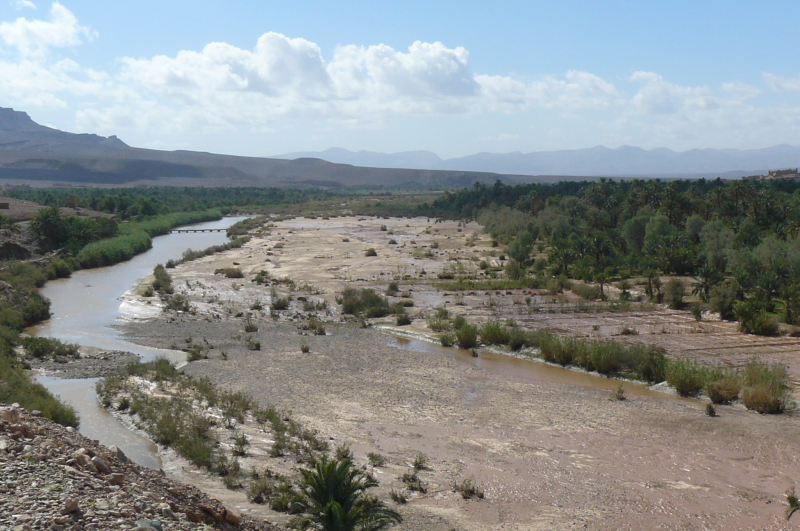
en.wikipedia.org 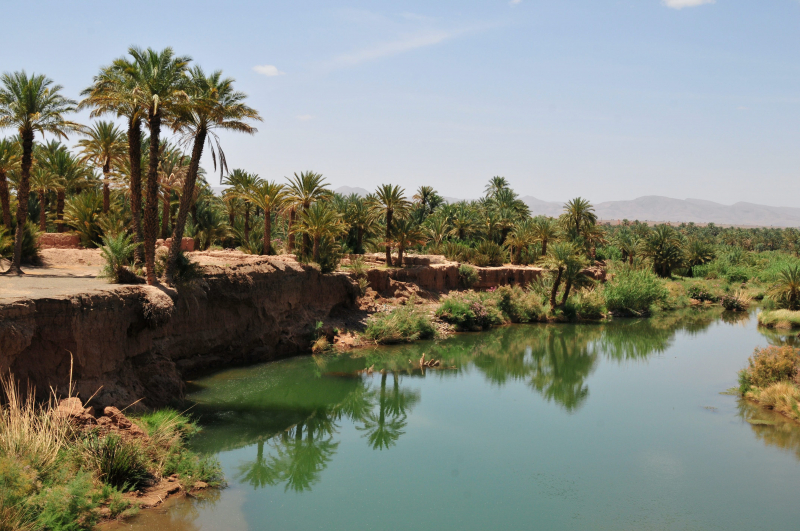
Draa Valley (Photo: lonelyplanet.com) -
The second one in Top 10 Longest Rivers in Morocco that Toplist would like to introduce to you is Oum Er-Rbia River. The Oum Er-Rbia River is a large, long, and high-flowing river in central Morocco. The river runs for 555 kilometers (345 miles).Oum Er-Rbia is the second longest river in Morocco, after the Sebou River, with an average water throughput of 105 m3/s. It begins in the Middle Atlas and flows through the city of Khénifra before reaching the Atlantic Ocean at the port of Azemmour on its left bank. The most important dam in Oum Er-Rbia is the Al Massira Dam. El-Abid River, Tessaoute River, and Lakhdar River are its most important tributaries.
The river's historical Berber nickname was Asif n Isaffen, which means "river of rivers." Scholars believe that the river's original Berber common name, Wansifen, was only recently changed, around the 16th or 17th century, and that a nearby village called Oum Rabia may have influenced this change.
A large number of groundwater springs feed Oum Er-Rbia. As a result, the area near its headwaters is known as "The Forty Springs," though this is a poetic term rather than an exact count.
Length: 555 km (345 mi)
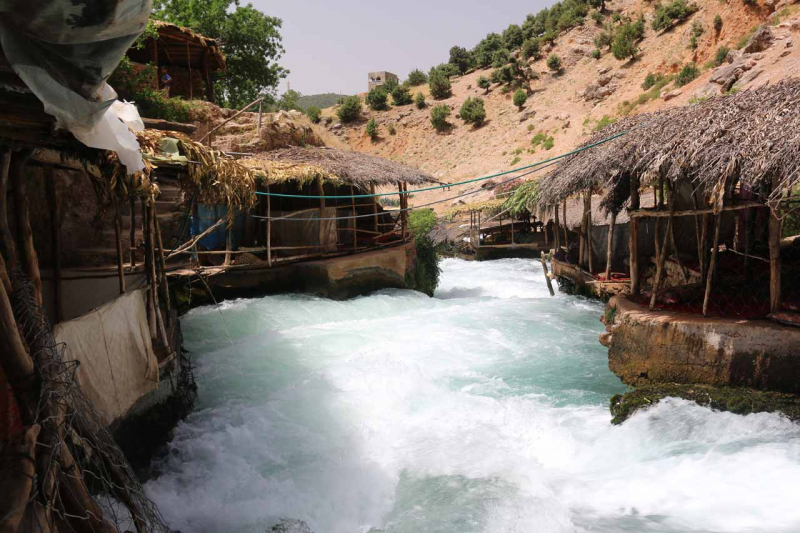
world-of-waterfalls.com 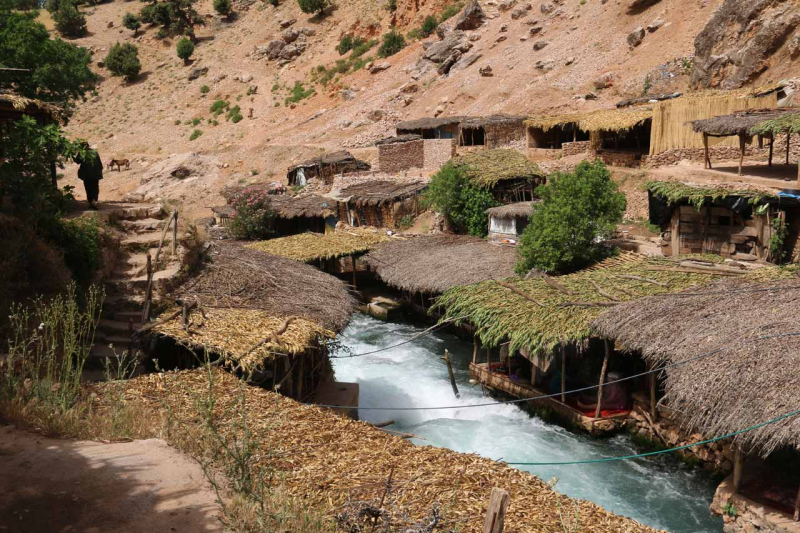
world-of-waterfalls.com -
The third one in Top 10 Longest Rivers in Morocco that Toplist would like to introduce to you is Moulouya River. Morocco's Moulouya River is 520 kilometers long. Moulouya River is the third longest river in Morocco. Its sources are in the Ayashi mountain range of the Middle Atlas.It empties into the Mediterranean Sea near Sadia, Morocco, at approximately 35.1228°N 2.3367°W.
The river's water level changes frequently. The Hassan II and Mohamed V Dams dam the river, which is used for irrigation.
Prior to French colonization, the Moulouya River was considered the border between Ottoman Algeria and the Moroccan dynasties. In 1692, a battle between Algerians and Alawites took place at this river's ford.
This river was known as Malva by the Romans. Since King Bocchus I, the Moulouya River has formed the eastern border of the kingdom of Mauritania, and more recently of the Rif Republic in the 1920s, a small part of Morocco containing important cities like Sadia and Oujda lying to the east, between the Moulouya and the Algerian border. The river also formed the eastern border of the Spanish Protectorate of Morocco until 1956.
Pollutants in the Moulouya River killed fish in August 2011, and local residents were concerned about their crops and livestock.
Length: 520 km (323 mi)
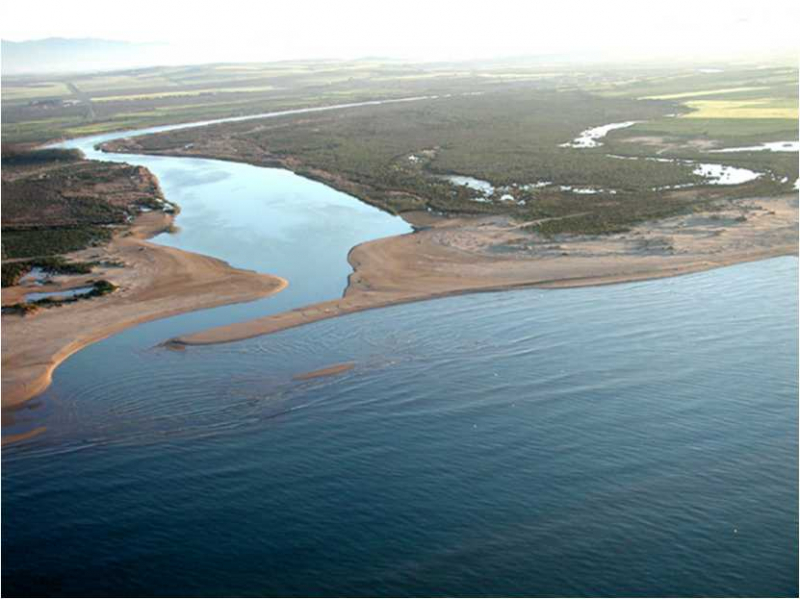
en.wikipedia.org 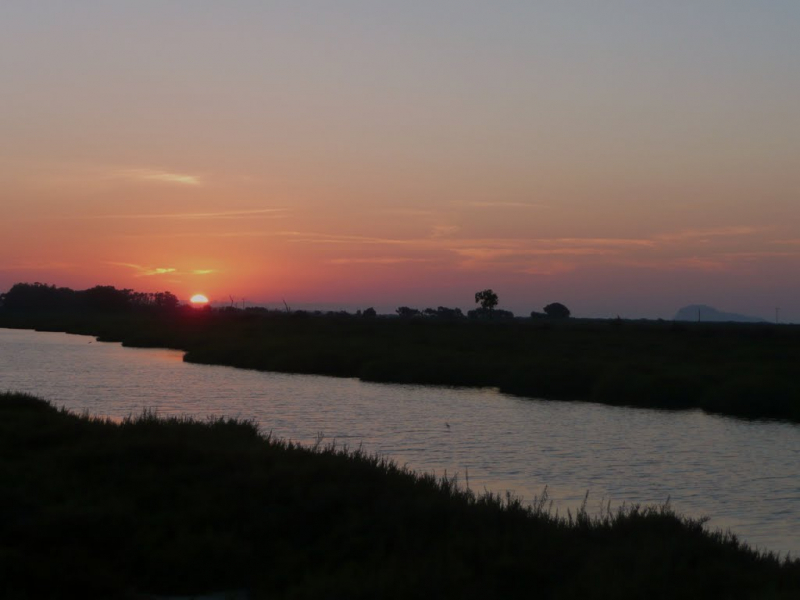
mapio.net -
The fourth one in Top 10 Longest Rivers in Morocco that Toplist would like to introduce to you is Sebou River. The Sebou River is located in northern Morocco. It is known as the Guigou River at its headwaters in the Middle Atlas Mountains. The river is 496 kilometers long and has an average flow of 137 m3/s, making it the largest river in North Africa by volume. It flows near Fes and empties into the Atlantic Ocean at Mehdya. Sebou is navigable for only 16 kilometers, all the way to Kenitra, Morocco's only river port. Its main tributaries are the Ouergha River, the Baht River, and the Inaouen River. The river irrigates Morocco's most fertile region, the Gharb.
In antiquity, Sebou was known as Sububus. Pliny the Elder describes it as "magnificus et navigabilis" (grand and navigable), flowing near the towns of Banasa (near Mechra Bel Ksiri) and Thamusida.
Despite the fact that there are few historical references to the Sebou being used for navigation after the Islamic conquest, its river mouth was an important harbor and shipyard during the Almohad period.
The Alaouite sultan Moulay Rashid built a bridge across the river near Fes in 1669–1670, which is still standing today.
During the precolonial period, the Sebou was famous for its Twait shad, which was highly prized by the people of Fez, but the shad became extinct on the Sebou due to pollution.
During the early years of the French protectorate, an expedition on the small steam boat Le Dantec successfully navigated the Sebou from Sidi Ali Ben Sliman to the city of Fez.
Length: 496 km (308 mi)
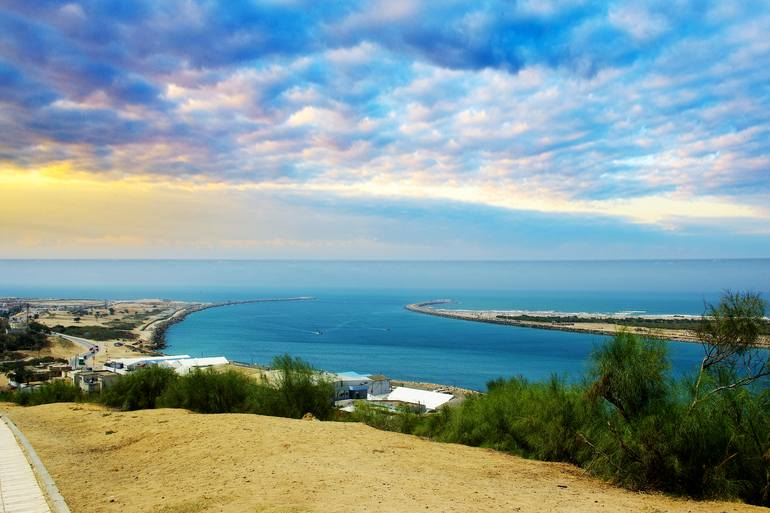
saatchiart.com 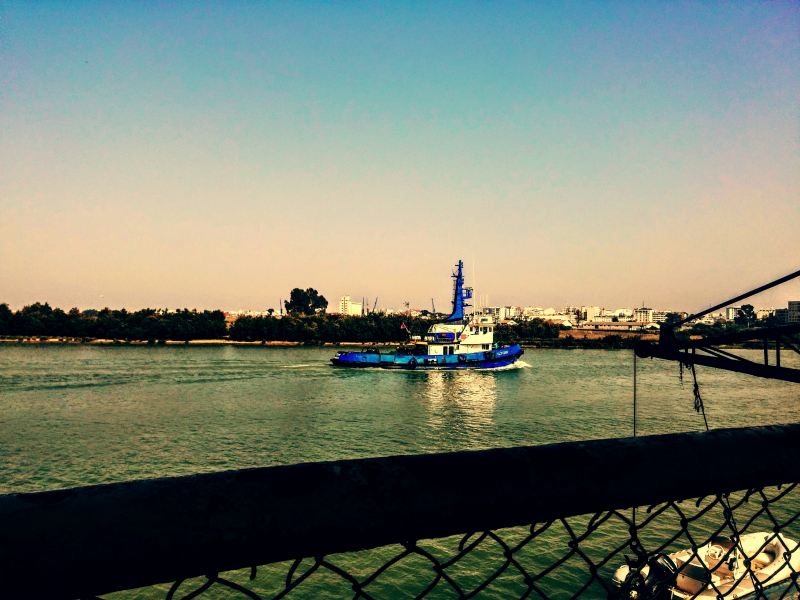
commons.wikimedia.org -
The fifth one in Top 10 Longest Rivers in Morocco that Toplist would like to introduce to you is Dadès River. The Dadès River is a Moroccan river. It is a Draa River tributary. The Dadès River rises in the High Atlas and flows south through the Dadès Gorges before turning west between the High Atlas and Anti-Atlas mountain ranges. The river eventually joins the Ouarzazate River, which flows into the Draa River.
Dades Gorge is easily reached by taxi from Tinerhir. The scenery is spectacular, with views of fascinating rock formations. The river makes the valley lush and green, while the surrounding area is rocky desert. There are still simple communities living in traditional houses here. Women can be seen washing laundry in the river and drying it on the nearby bushes.
The Dadès River's flow rate is highly seasonal, with peak flows occurring from January to April as a result of heavy precipitation and subsequent snowmelt. Summer water temperatures range from 23 to 28 degrees Celsius, and the water quality is alkaline. Water has a relatively high electrical conductivity.
Length: 349 km (217 mi)
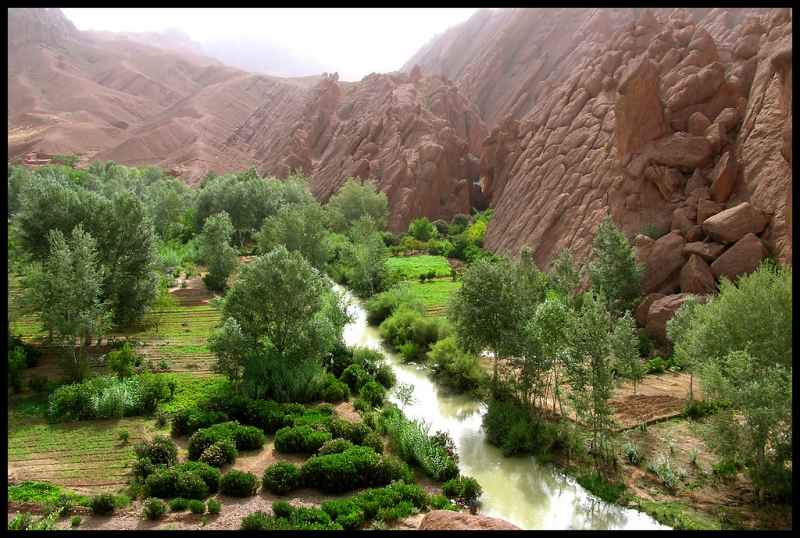
flickr.com 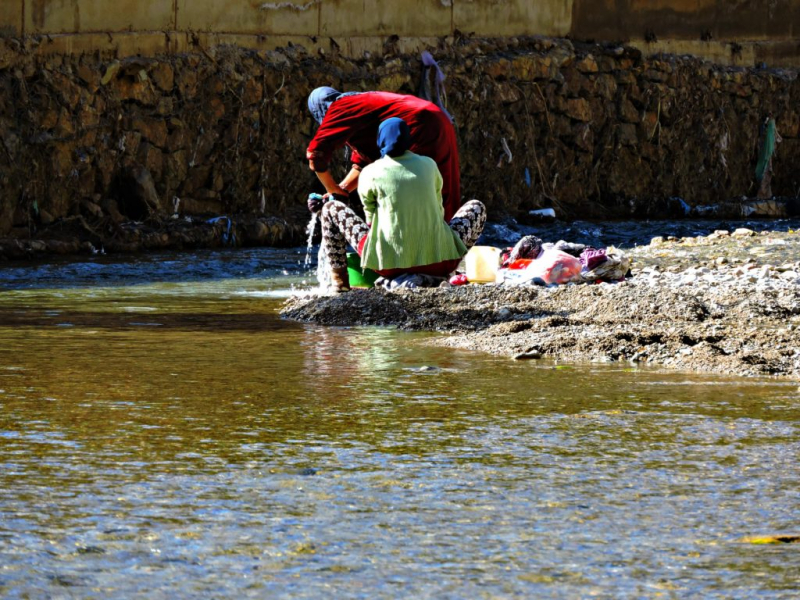
skymoroccotrips.com -
The Ziz River flows through Morocco and Algeria in the south. It rises in Morocco's High Atlas Mountains and flows 282 kilometers (175 miles) into Algeria's Sahara Desert. Although water flow along the Ziz riverbed is intermittent, its watercourse has long been used to facilitate human transit through the mountainous region.
Er Rachidia, Erfoud, and Sijilmassa are among the cities along the Ziz River. On the Ziz near Er Rachidia, there is a dam with hydroelectric generating capacity.
Typically, along the Ziz, there is a common water rights rule that states that each village and villager is entitled to a fair use and extraction of Ziz waters. Water is diverted in flatter areas to form a canal that irrigates palm groves and other crops while also supplying domestic use.
Length: 281 km (175 mi- shared with Algeria)
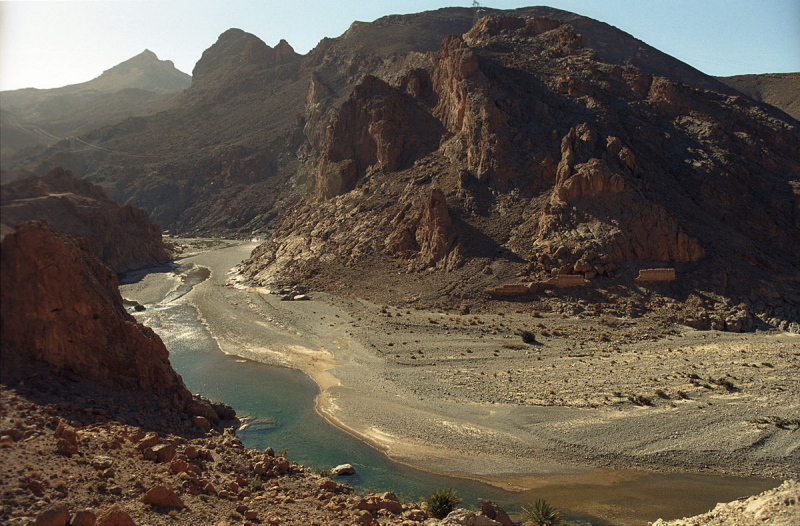
en.wikipedia.org 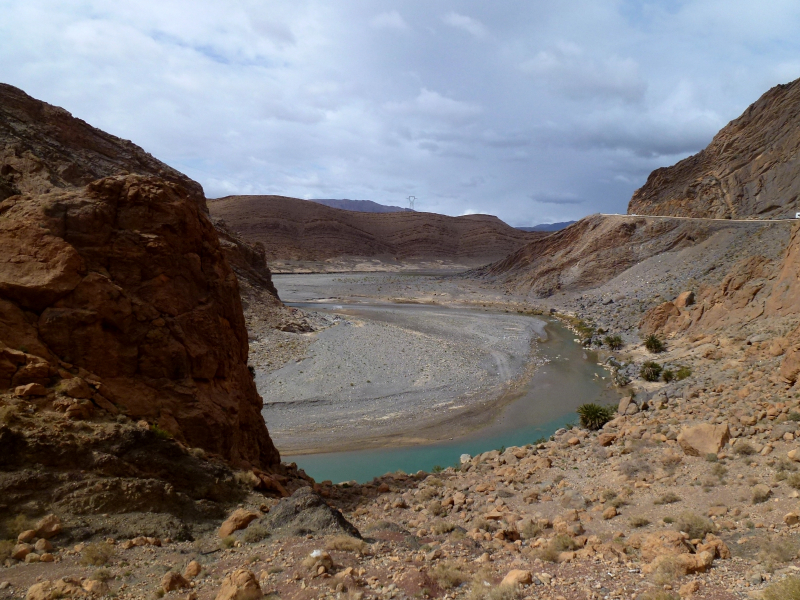
commons.wikimedia.org -
Tensift is a river in Morocco's central highlands. Its headwaters are in the eastern High Atlas, and it receives water from numerous tributaries in the region.It flows close to Marrakesh and empties into the Atlantic Ocean at the ancient fortress of Souira Qedima, about 40 kilometers south of Safi. Its water discharge varies depending on rainfall; it is one of Morocco's ten major rivers, but it can frequently be waded through even close to its outlet.
The Oued Tensift has its source in the High Atlas in a deserted area about 25 km northwest of Telouet. It flows north of Marrakech in a westerly direction through the Haouz plain, where it only carries water after heavy or prolonged rainfall as a result of water extraction for irrigation purposes. It finally flows into the Atlantic about 33 km south of Safi near the village of Souira Kedima. Depending on the source, the catchment area is given as between 20,800 and 18,500 km².
Length: 270 km (168 mi)
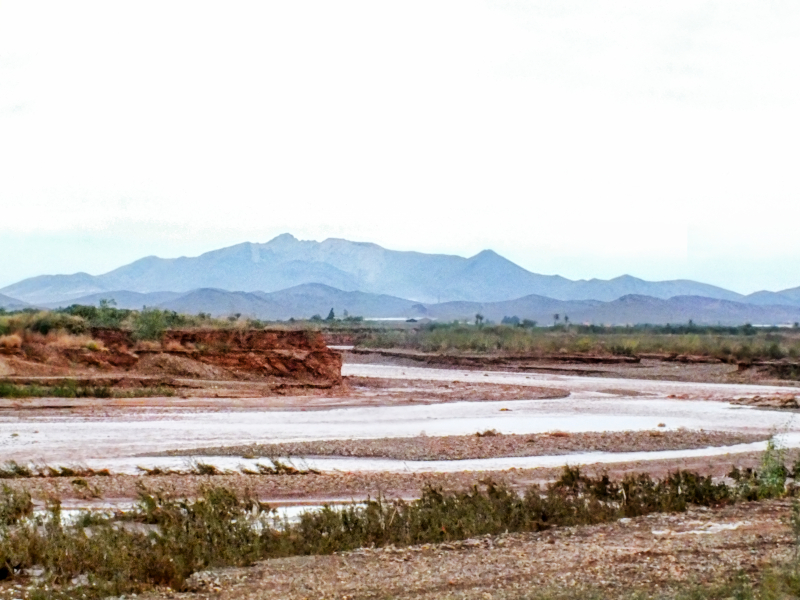
commons.wikimedia.org 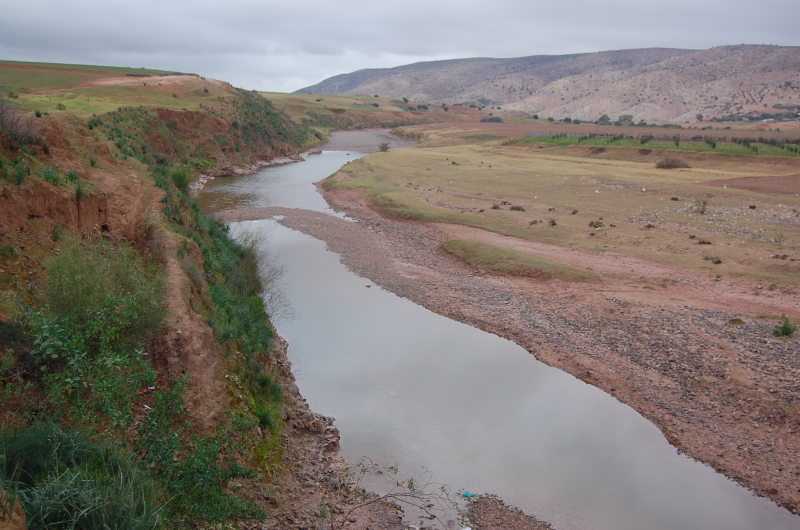
de.wikipedia.org -
The Bou Regreg is a river in western Morocco that flows into the Atlantic Ocean between the cities of Rabat and Salé. This river's estuary is known as Wadi Sala. The river is 240 kilometers long, with a tidal estuary that extends upriver for about 24 kilometers. Its average discharge is 23 m3/s, but it can reach 1500 m3/s during floods. The river rises in the Middle Atlas mountains at an elevation of 1627 meters on the level of Jbel Mtourzgane (Province of Khemisset) and Grou (Province of Khénifra) and flows to the Atlantic Ocean, separating the cities of Rabat to the south and Salé to the north.
The Bou Regreg's water quality issues include tidal saltwater intrusion, excessive nitrate runoff from agricultural land uses, and mercury contamination thought to be caused by the use of certain pesticides within the drainage basin.
The Phoenicians and Carthaginians, who established several colonies in Morocco, lived on the banks of the Bou Regreg, about two kilometers from the river's mouth at the ancient site of Chellah. This archaeological site contains the ruins of a Roman town known as Sala Colonia, which Ptolemy referred to as Sala. Chellah was an important ancient port city with ruins such as the Decumanus Maximus, or main roadway, as well as a forum, a monumental fountain, a triumphal arch, and other Roman ruins.
Length: 240 km (150 mi)
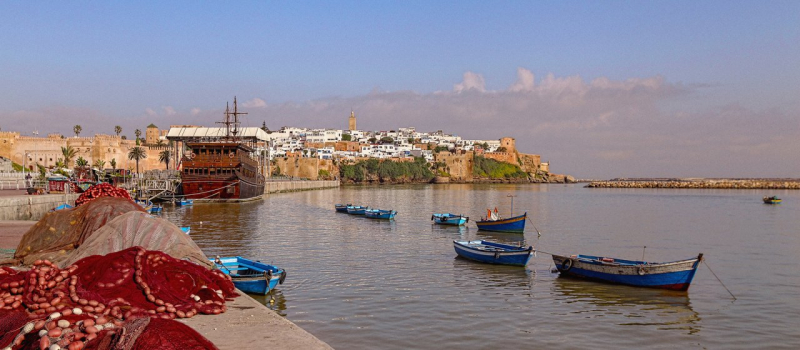
mydestinations.com.au 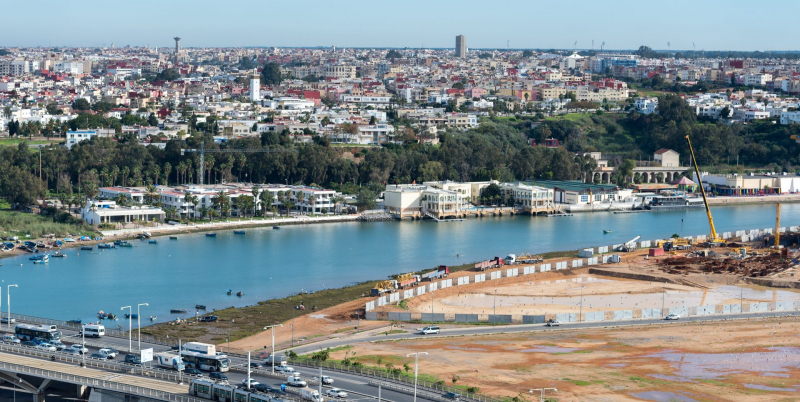
ufmsecretariat.org -
The Sous River, also known as the Sus River or the Souss River, is a river in mid-southern Morocco's Sous region- an area in mid-southern Morocco. Sous River is the ninth longest river in Morocco.
Sous River flows west from the High Atlas, passing through Aoulouz, Taroudannt, Oulad Teima, Inezgane, and At Melloul. It forms a basin that is protected from the Sahara's desert climate by the Anti-Atlas mountains and is one of Morocco's most fertile regions. The Anti-Atlas, also known as the Lesser Atlas or Little Atlas, is a mountain range in Morocco that is part of the Atlas Mountains in Africa's northwest. The Anti-Atlas stretches 500 kilometers from the Atlantic Ocean in the southwest to the northeast, to the heights of Ouarzazate and further east to the city of Tafilalt. To the south, the range is bordered by the Sahara Desert. The main dam on the Sous River is the Aoulouz Dam.
Length: 180 km (110 mi)
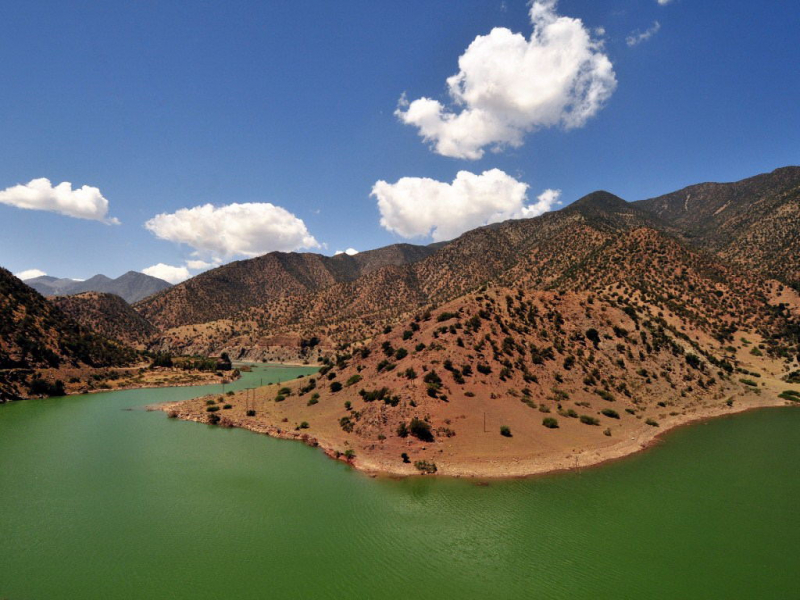
en.wikipedia.org 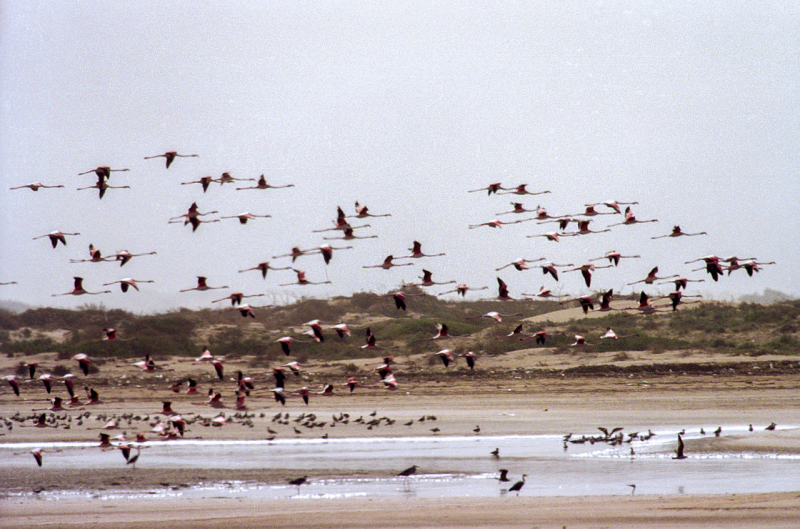
wikiwand.com -
The Loukkos River is a major tributary of the Atlas Mountains in northern Morocco. Despite its short length (about 100 km), the river is Morocco's third largest, with an average flow of 50 m3/s. The Loukkos river originates in the Rif Mountains and flows into the Atlantic Ocean in the city of Larache; the river serves as the city's port. The Loukkos river basin is 3,730 km2 in size and contains some of the country's most fertile and productive agricultural lands.
One of the river's tributaries, Oued Makhazine, is historically significant because it witnessed one of Morocco's most decisive battles, the Battle of Alcácer Quibir. On August 4, 1578, a joint army of deposed Moroccans fought a battle.The army of the deposed Moroccan monarch Abu Abdallah Mohammed II Saadi and his ally, King Sebastian of Portugal, was defeated by the army of the new Moroccan sultan from the same Saadi dynasty (who was also Abu Abdallah's uncle) on 4 August 1578.
During floods, the river can cause significant flooding. Tomás López and Vargas drew a map of the river in 1775 and labeled it "River Lucos" . For a time, the river served as a dividing line between Morocco and the French imperial lands.
Length: 175 km (109 mi)
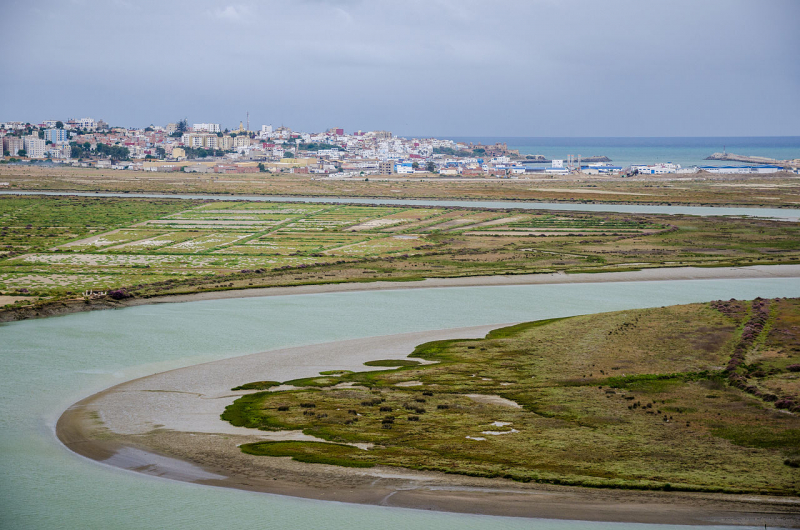
en.wikipedia.org 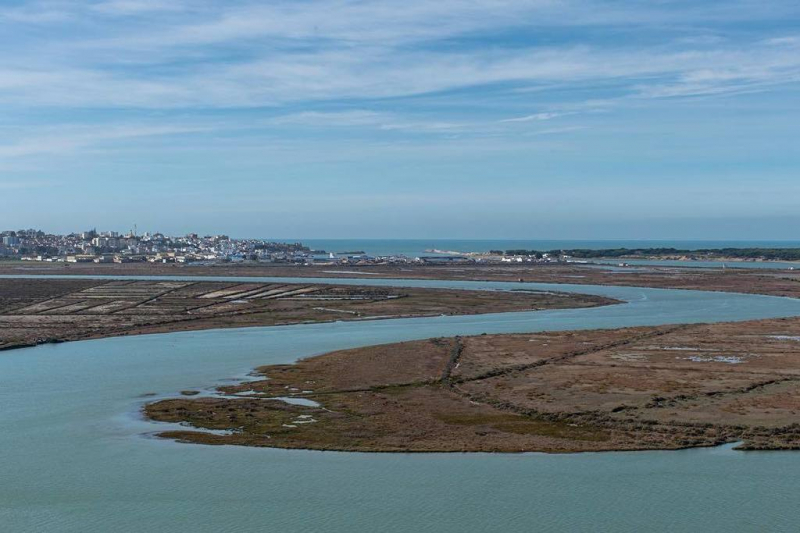
twitter.com































